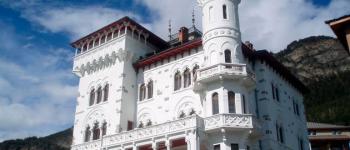
"This is the most powerful fortress in my kingdom," said Henry IV.
The good King spoke of the citadel and Frederic Mistral called it "the key to Provence".
A bit of History...
A prehistoric village 4000 years ago, a stopover for the Romans on the Domitian Way which linked Italy to the Rhone delta, a bishopric in the 6th century, a stronghold of the Counts of Forcalquier in the 11th century, property of the Counts of Provence, it was for them the frontier of the North.
After Charlemagne, Sisteron was part of the Kingdom of Arles, then for a century and a half, the political capital or at least the stronghold of the tiny state that returned to the county of Provence in 1209 after the death of William II.
In the Middle Ages, the city was a stronghold of the Counts of Forcalquier in the 11th century, then property of the Counts of Provence, for the latter it was the northern frontier.
From 1562 to 1594 the religious wars saw the Protestants and the Catholics fighting over the town and its fortress which controls the only bridge over the Durance.
While riots had broken out in March 1789 in Sisteron, the news of the storming of the Bastille was welcomed, this event heralded the end of royal arbitrariness. The bishopric is suppressed in 1790
At the beginning of the Second World War the Third Republic sought places of internment for prisoners. The municipality of Sisteron proposed the citadel, where political prisoners (communists, anarchists) were interned, whom the Vichy regime kept locked up for the duration of the war.
In the following years, 22 Jews are arrested in Sisteron before being deported.
On August 15, 1944, the first day of the Provence landings, French B-26 Marauder and American flying fortresses attempt to cut the rail and road bridges over the Buëch and Durance rivers. The accesses are reached, but the bridges are not destroyed.
The citadel
At an altitude of 500 m, the citadel of Sisteron overlooks the city. It is located in a passage between the Dauphiné and the Provence and Durance rivers. Built on a rocky spur, it is the first thing you see when you arrive in the town. The citadel, with its fortifications, was a strategic lock on the road leading from the Alps to the Mediterranean.
Listed as a historical monument, it is the centrepiece of the town.
Jehan Erard, military engineer of Henri IV, then Vauban, left their mark on it.
The citadel, the upper rampart, the clock tower, the chapel and the stone guardhouse known as the Devil's gatehouse, were classified as historic monuments in 1925.
Office de Tourisme Sisteron Buëch
Bureau de Sisteron
1, place de la République,
04200 Sisteron
Tél. 04 92 61 36 50
Translated with www.DeepL.com/Translator
(free version)





